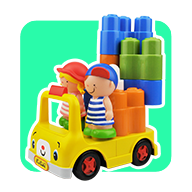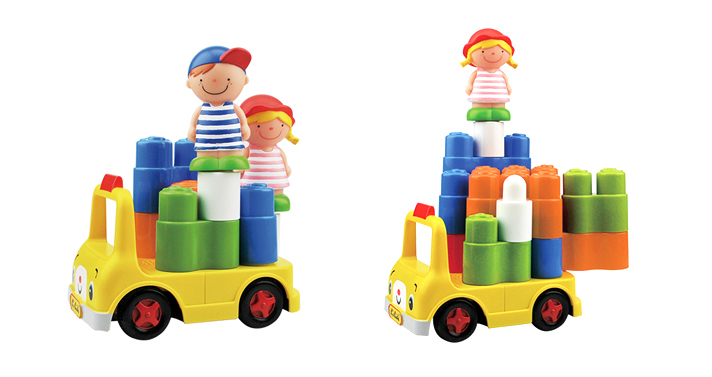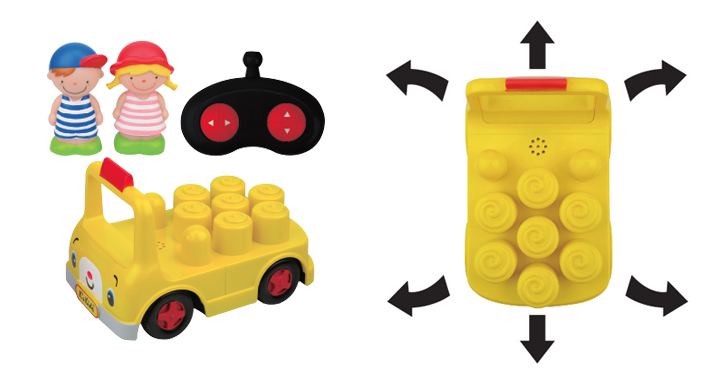 : 8.5cm(W) x 5.5cm(H) x 4.5cm(D)
: 8.5cm(W) x 5.5cm(H) x 4.5cm(D) : 9.5cm(W) x 5.5cm(H) x 3cm(D)
: 9.5cm(W) x 5.5cm(H) x 3cm(D) : 6cm(W) x 5.5cm(H) x 3cm(D)
: 6cm(W) x 5.5cm(H) x 3cm(D) : 3cm(W) x 5.5cm(H) x 3cm(D)
: 3cm(W) x 5.5cm(H) x 3cm(D) : 3cm(W) x 5.5cm(H) x 3cm(D)
: 3cm(W) x 5.5cm(H) x 3cm(D) : 4cm(W) x 8.6cm(H) x 4cm(D)
: 4cm(W) x 8.6cm(H) x 4cm(D) : 5cm(W) x 8.6cm(H) x 4cm(D)
: 5cm(W) x 8.6cm(H) x 4cm(D) : 10cm(W) x 6.5cm(H) x 2.5cm(D)
: 10cm(W) x 6.5cm(H) x 2.5cm(D)- Concept of direction
- Mind and hand coordination
- Creative block construction
- Learn motion, space and weight
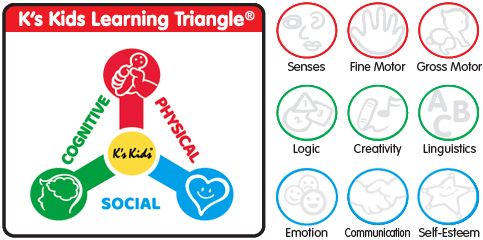









 Senses
Senses
The fundamental senses of seeing, tasting, hearing, smelling & feeling encourage a child's curiosity.
 Fine Motor Skills
Fine Motor Skills
Fine motor skills are those smaller actions between the thumb and fingers or using the toes to wriggle and feel the objects.
 Gross Motor Skills
Gross Motor Skills
Gross motor skills are larger movements involving the arm, leg, or feet muscles or the entire body.
 Logic
Logic
Logical training enables babies to make connections between pieces of information.
 Creativity
Creativity
Colors, shapes, learning how to draw, getting familiar with music and rhythm, all goes to aid the growth of a child's creativity.
 Linguistics
Linguistics
Linguistic Intelligence is the ability to use sound and language for expression and comprehension of others while a child is developing.
 Emotion
Emotion
A healthy child should be able to control and express his emotion, and interact effectively with others with mutual trust.
 Communication Skills
Communication Skills
Good communication skills lead a child to perform cooperative tasks and become productive team members.
 Self-Esteem
Self-Esteem
Self-Esteem is an overall sense of achievement a child feels from the important people around him. Task basis activities could help children to build up a stronger self-esteem with a better judgment about their own worth.
*These are recommendations made under normal circumstances. Parents can determine which activities are most suitable depending on the progress of individual children.
Objective: Cognitive training - learning different directions
Method: Use the remote control to teach children directions, like forward, backward, left and right.




































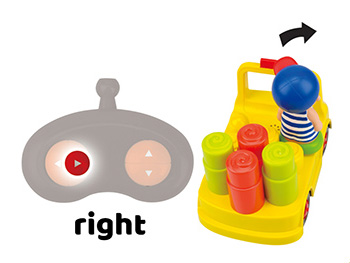











Objective: Eye hand coordination training – stacking blocks
Method: Encourage children to stack the blocks. This also trains their spatial and motor skills.








Objective: Cognitive training - sorting shapes
Method: Encourage children to sort the blocks into five groups based on their shapes.








Objective: Gross motor skills training - pushing
Method: Encourage children to push the car back and forth.








Objective: Listening and attention training - listening to music
Method: Press the different remote control buttons to activate different songs from the car. Observe your child’s reaction to the music.








Objective: Eye hand coordination - remote controlling the car
Method: Use the remote control to control the car.








Objective: Distance and eye hand coordination training - driving through obstacles
Method: Use Popbo blocs to create obstacles. Then encourage children to drive the car through or around the obstacles!








Objective: Imagination training - making up stories
Method: Encourage children to make up their own stories using the blocks.












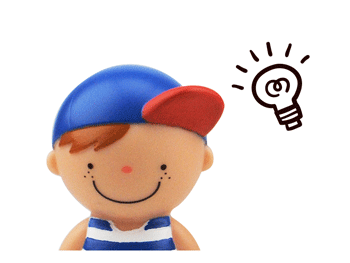











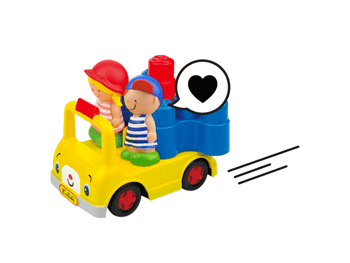











Objective: Eye hand coordination and creativity training - designing vehicles
Method: Encourage children to design their own vehicles. This also trains their motor skills.












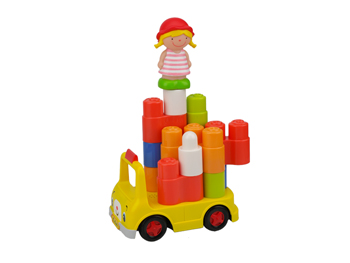











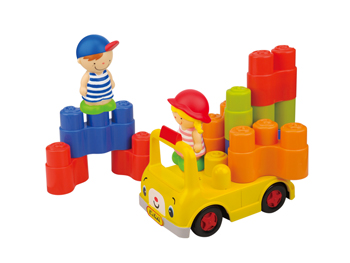











Objective: Construction training - building with other Popbo Blocs
Method: All Popbo Blocs sets are compatible. Children can combine different sets to build new configurations. (Note: Other Popbo Blocs are sold separately)
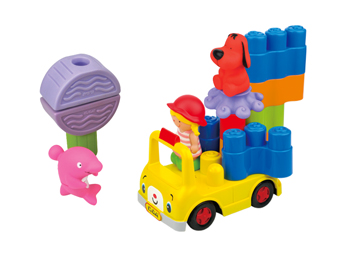











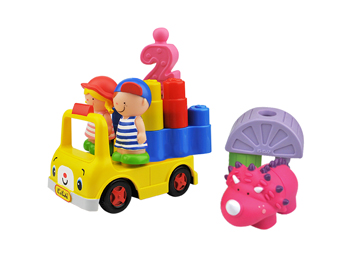











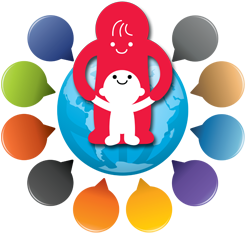
Sharing
We sincerely hope that the guidelines provided by our K's Kids Parents' Support Center will help you make the most of your K's Kids product. We hope that every child with a K's Kids product will benefit from playing and learning from it.
We also believe that every child is unique and full of creativity.
Apart from the learning methods provided here, have you or your child discovered fun and creative ways to play with your K's Kids toys? A different combination of Chain-an-inchworm? An interesting, new way to teach language using Learn to Talk™ ? Or do you simply want to share your feelings and opinions?
To share your views, please use the form below. Attach a photo or video and provide us with a short note. Whatever it is, we earnestly hope that you will share your views with us. Your views may in turn be shared with countless other parents, so that more kids can have fun with their K's Kids toys.
Please do not close this window.















































































